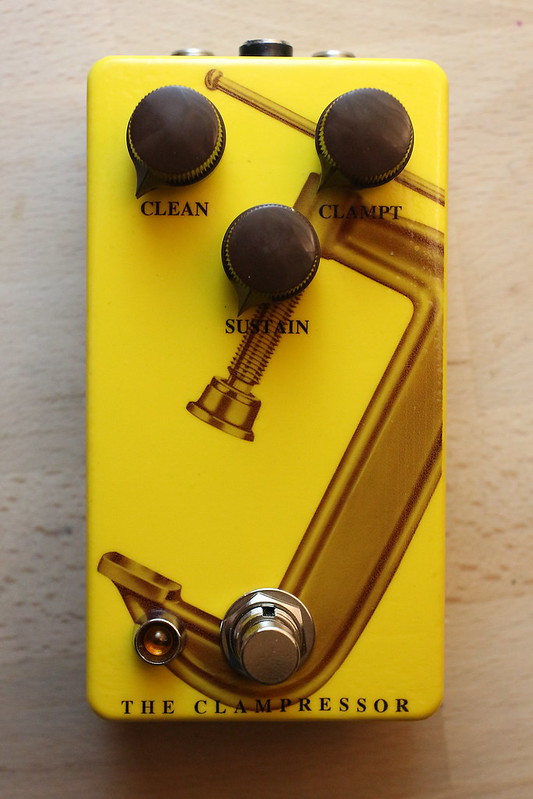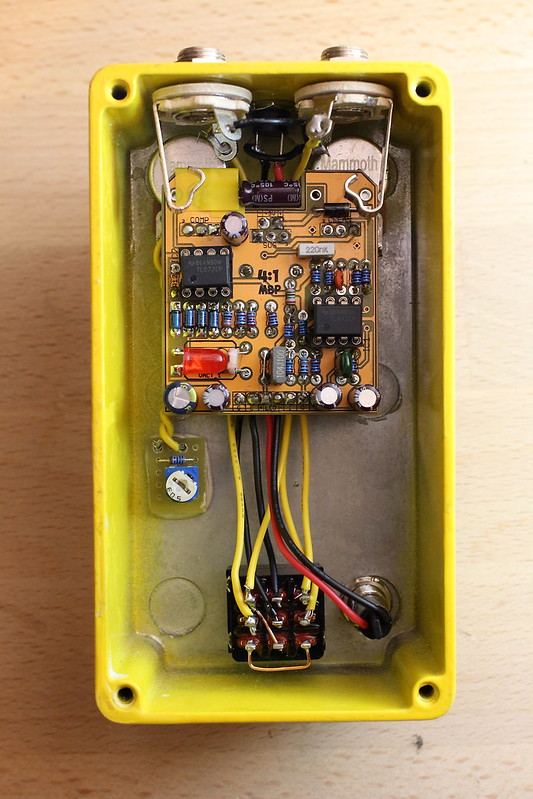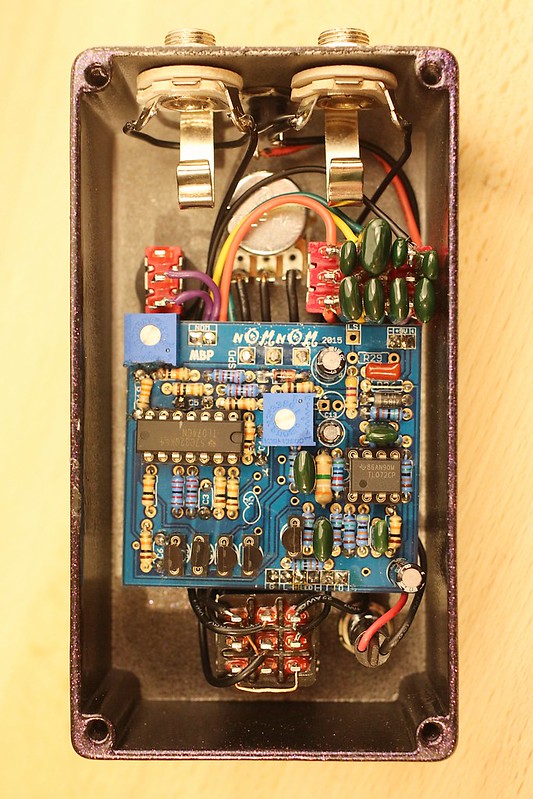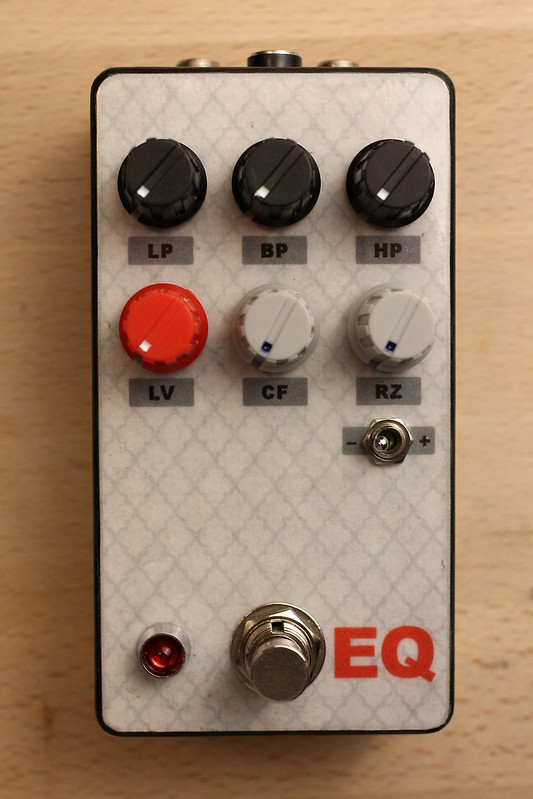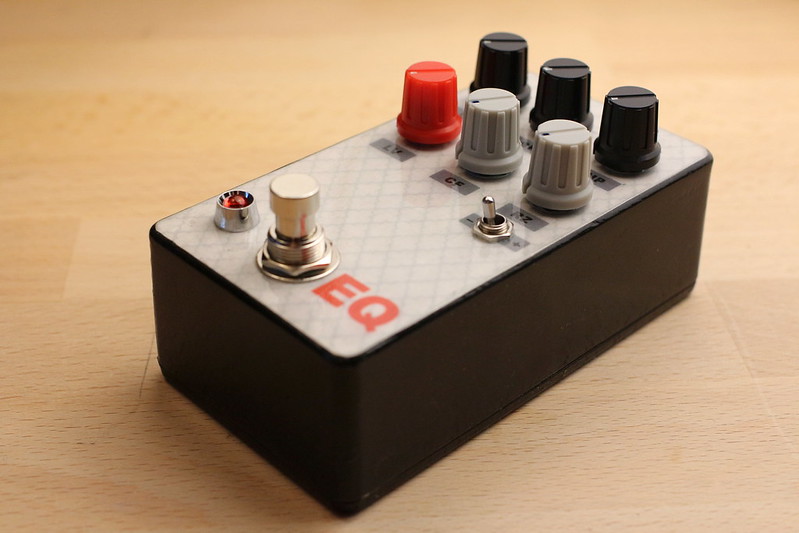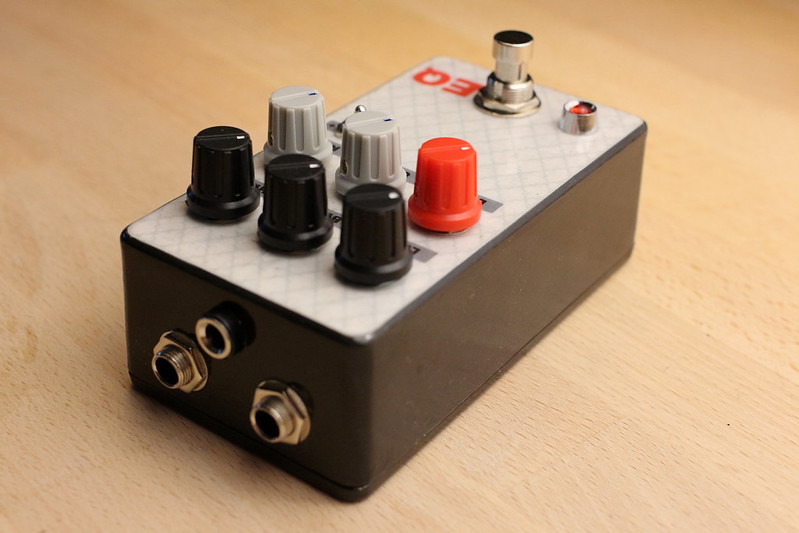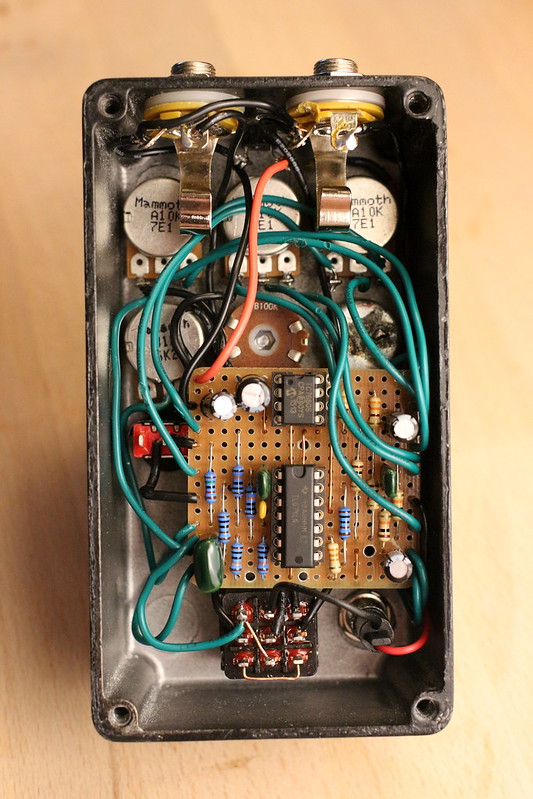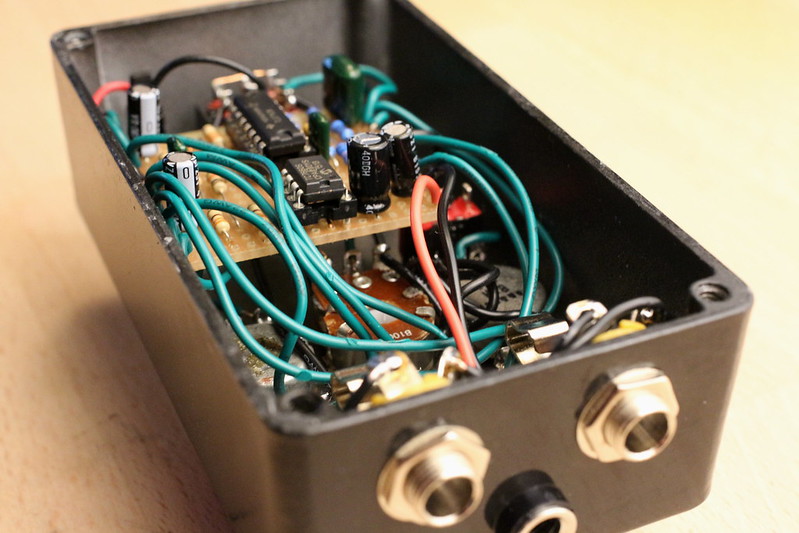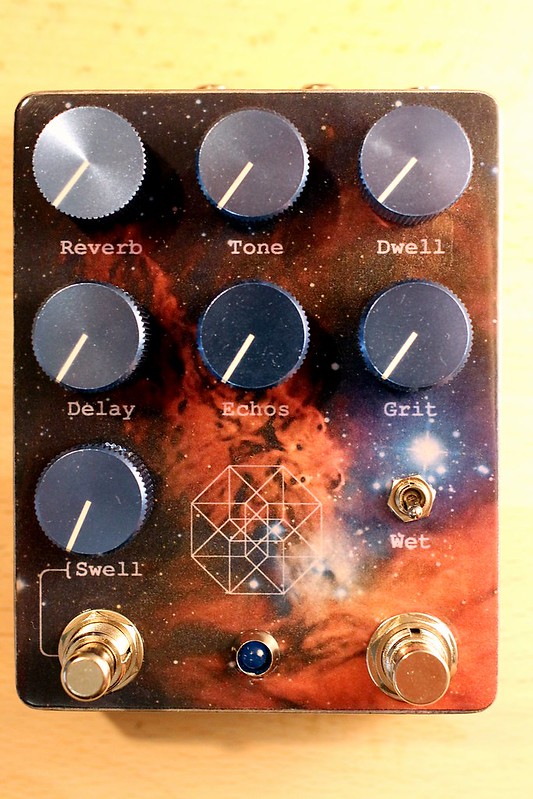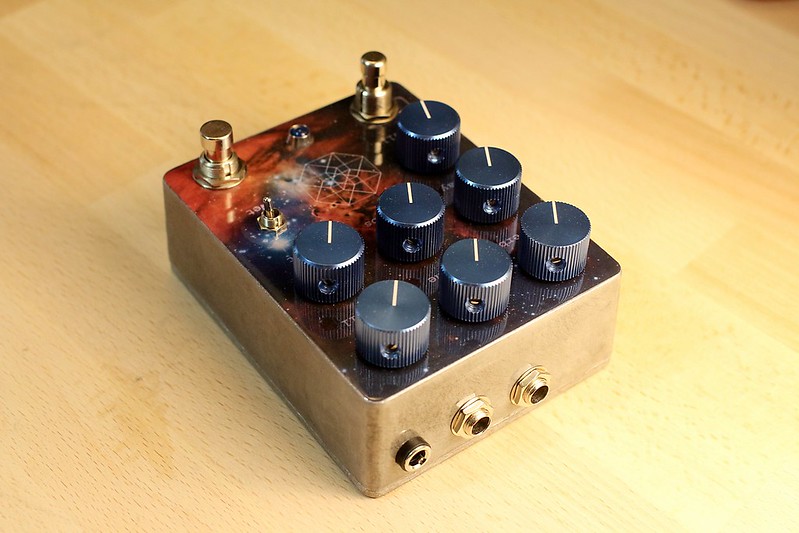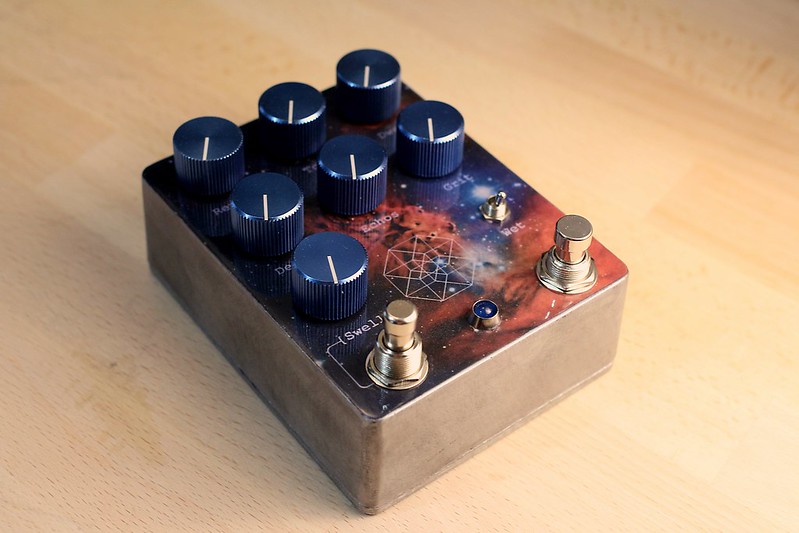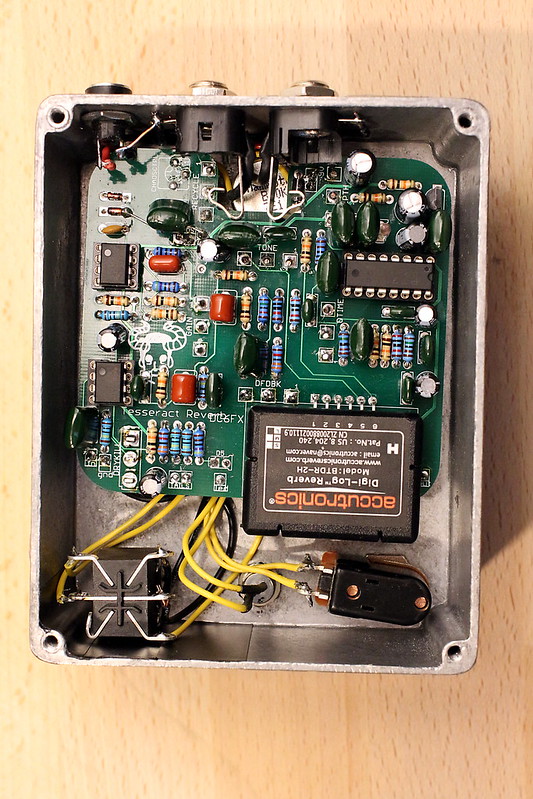This is my take on the Runoffgroove "Grace" overdrive.

The JFET input buffer of the original is replaced here with a BJT buffer for an input impedance of around 1M ohm (depending on the transistors gain). Bias voltage is taken from pin 7 of the LM386 which saves a couple resistors and a little bit of space. A tilt EQ sits at the end. Unlike a BMP, this offers a mid bump. The switch bypasses the tonestack.
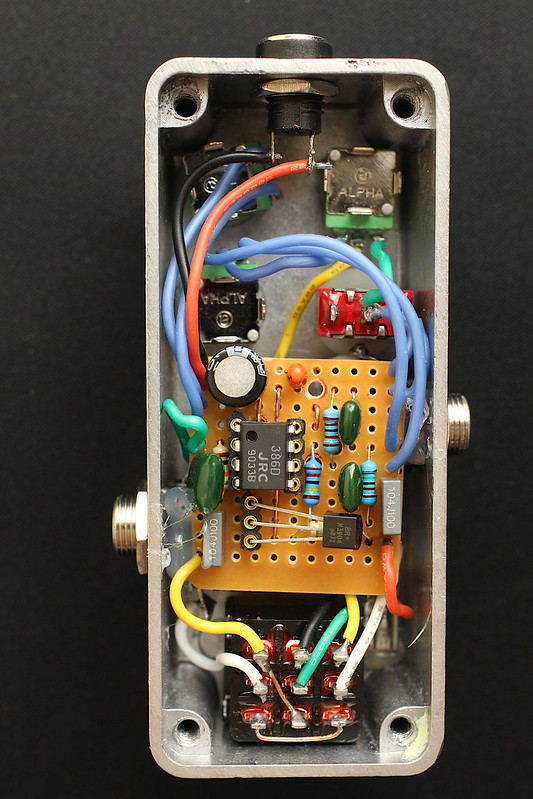
This has the characteristic crackly decay of every other LM386 overdrive I've heard. I wouldn't want to use this into a clean amp, but it does sound very good pushing a dirty amp or another overdrive. You get that percussive attack and the mid boost in the tone control keeps everything tight.


The JFET input buffer of the original is replaced here with a BJT buffer for an input impedance of around 1M ohm (depending on the transistors gain). Bias voltage is taken from pin 7 of the LM386 which saves a couple resistors and a little bit of space. A tilt EQ sits at the end. Unlike a BMP, this offers a mid bump. The switch bypasses the tonestack.

This has the characteristic crackly decay of every other LM386 overdrive I've heard. I wouldn't want to use this into a clean amp, but it does sound very good pushing a dirty amp or another overdrive. You get that percussive attack and the mid boost in the tone control keeps everything tight.









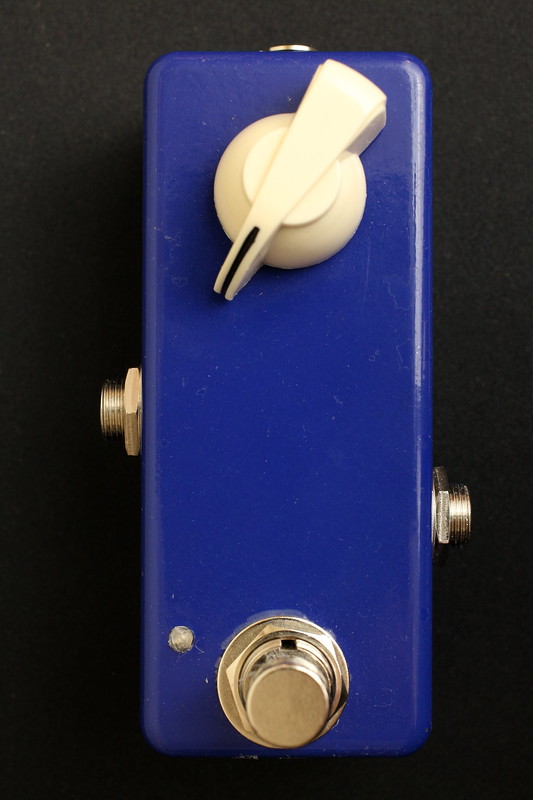



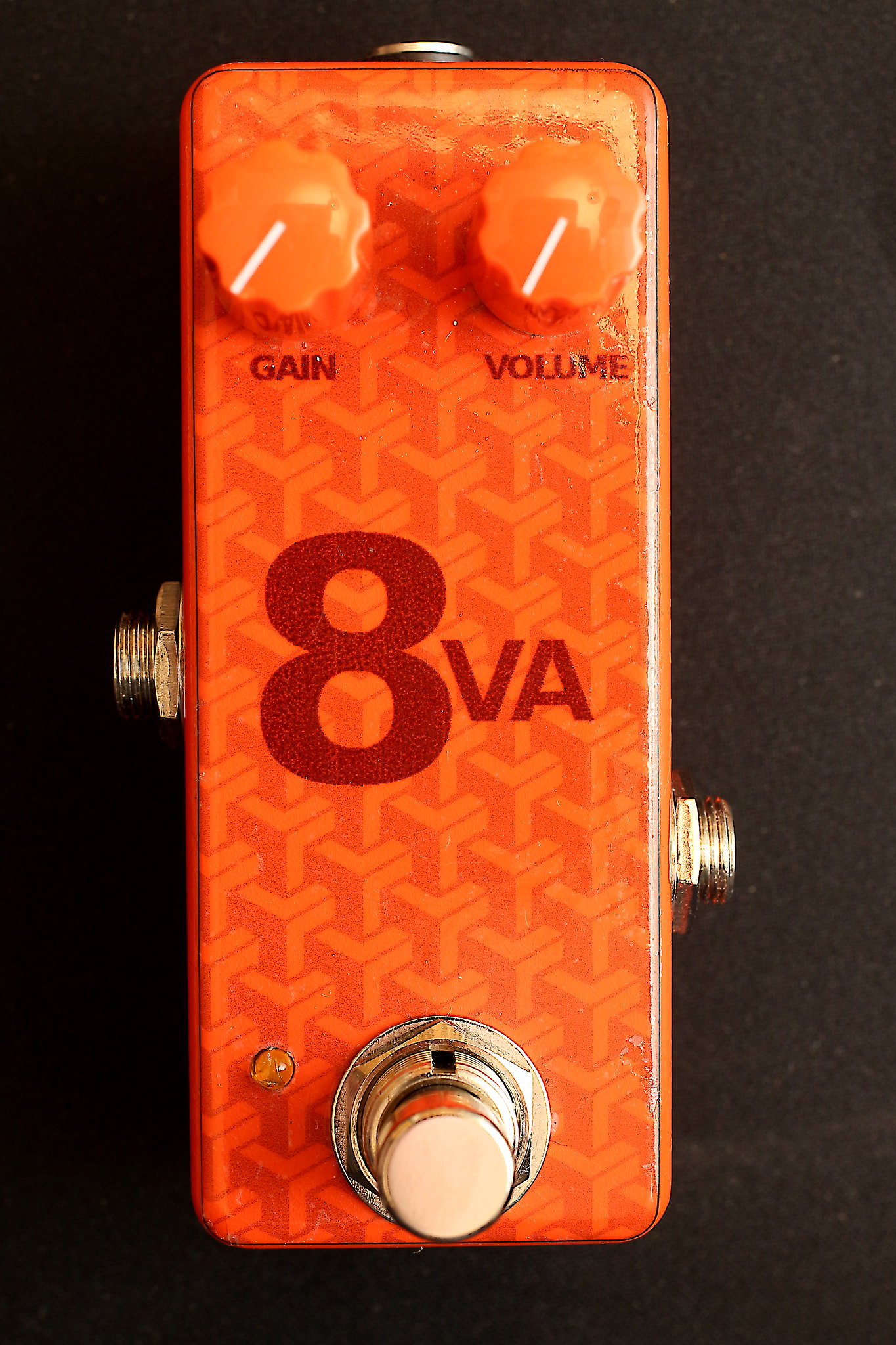

















 ).
).